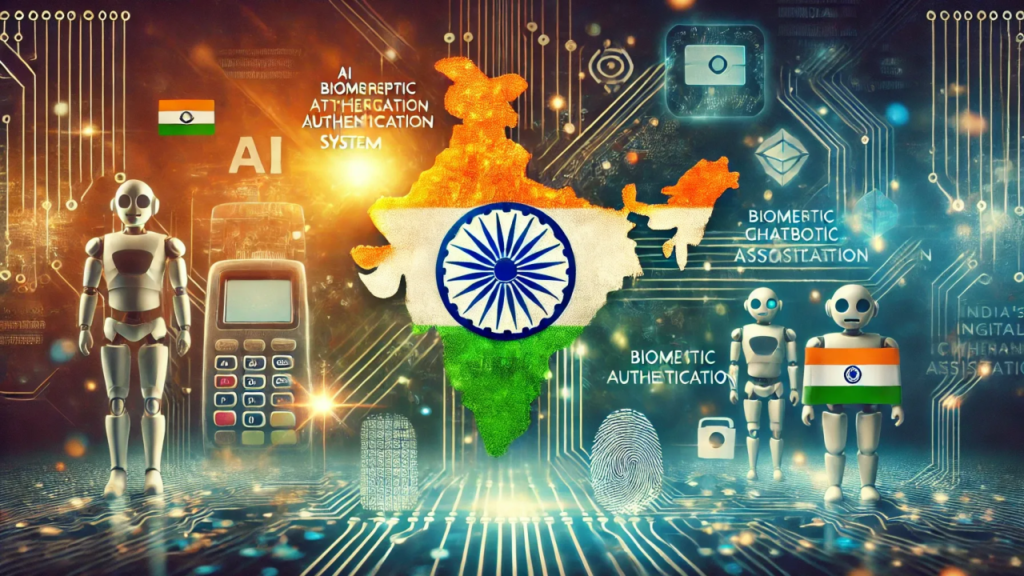India’s Digital Economy: Government Launches Digital India 2.0 Initiative

India’s digital transformation is entering a new era with the government’s launch of the highly anticipated ‘Digital India 2.0’ initiative. Building on the success of the original Digital India program, which was launched in 2015, the new phase aims to further accelerate the country’s digital economy, make governance more transparent, and foster inclusive growth through the power of technology. As the world’s largest democracy and one of the fastest-growing digital markets, India is poised to take a leap forward in its journey towards becoming a global leader in the digital economy.
Digital India: A Recap of the Journey So Far
The Digital India program, which was launched by Prime Minister Narendra Modi in 2015, sought to empower the Indian population through digital infrastructure, digital services, and digital literacy. Over the years, the initiative has made significant strides in transforming the country into a more connected, tech-driven society. The government’s push towards financial inclusion led to the widespread adoption of Aadhaar (India’s biometric ID system), Jan Dhan Yojana (financial inclusion program), and the promotion of digital payments via platforms like UPI (Unified Payments Interface).
Key achievements under the original Digital India program include the rollout of BharatNet, which aims to provide high-speed broadband access to rural areas, and the Digital Locker system for paperless governance. Moreover, initiatives like e-education, e-healthcare, and Digital India Land Records Modernization Programme have helped in making services more accessible, especially in rural and underserved areas.
However, despite these successes, the journey hasn’t been without its challenges. Issues such as digital literacy gaps, cybersecurity concerns, and last-mile connectivity in remote regions have continued to impede the full realization of the vision. The government’s new initiative, Digital India 2.0, is designed to tackle these challenges while fostering innovation and enabling businesses to thrive in a rapidly evolving global digital economy.
Key Objectives of Digital India 2.0
The launch of Digital India 2.0 marks a more ambitious approach, focused on addressing the evolving needs of the digital landscape while promoting equitable growth. Here are the key objectives and pillars of the initiative:
Enhanced Connectivity and Infrastructure One of the central components of Digital India 2.0 is improving India’s digital infrastructure. The government aims to ensure that high-speed internet reaches every corner of the country, particularly remote and rural areas where access remains limited. The BharatNet project, which aims to connect all villages with high-speed broadband, will be expanded under this new initiative, offering faster and more reliable internet connections.
Promotion of Digital Literacy While digital adoption in India has grown significantly, a large portion of the population still lacks the skills to fully utilize digital services. Digital India 2.0 seeks to bridge this gap by expanding digital literacy programs, ensuring that every Indian citizen has the knowledge and skills to use technology effectively. This includes enhancing digital education in schools and launching skill development programs aimed at preparing the workforce for the growing demand in the digital economy.
Cybersecurity and Data Protection As India’s digital economy grows, the need for robust cybersecurity measures has become more pressing. With the rise in online transactions, e-commerce, and government services, Digital India 2.0 will focus on strengthening the nation’s cybersecurity infrastructure. This includes the creation of a dedicated National Cybersecurity Agency, which will safeguard sensitive data and digital services. Data protection laws and frameworks will also be strengthened to ensure privacy and trust in the digital ecosystem.
Support for Startups and Innovation The government is aiming to make India a global hub for startups and innovation in the digital space. Digital India 2.0 will create an enabling environment for businesses, particularly startups, to grow and thrive. The initiative will support innovation hubs, provide mentorship, and facilitate access to venture capital. This is in line with India’s ambition to become a global leader in technology by fostering the next generation of digital solutions.
E-Governance and Citizen Services The program will also focus on further digitizing government services. More public services will be moved online to ensure that citizens can access them without the need to visit government offices. The new initiative will push for the digitization of all government records, digital certificates, and online grievance redressal systems. The objective is to make governance more transparent, efficient, and accountable.
Digital Health and Education Digital India 2.0 will enhance the adoption of e-health and online education. The National Digital Health Mission (NDHM) will be expanded, enabling better access to healthcare services and records. Similarly, online education platforms and digital classrooms will be promoted, ensuring that education reaches all corners of the country, especially in rural and underserved areas.
Challenges and the Road Ahead
Despite the ambitious goals, Digital India 2.0 will face several hurdles. One of the biggest challenges is ensuring that digital infrastructure is available in the remotest parts of the country, where access to technology remains scarce. Additionally, bridging the digital literacy divide remains a key issue, as many citizens, especially in rural areas, lack the skills to navigate digital platforms effectively. Ensuring that the benefits of digital transformation are inclusive and accessible will be crucial for the success of this initiative.
Moreover, the growing concerns around cybersecurity and data privacy in an increasingly digital world will require strong regulatory frameworks and continuous innovation to mitigate risks.
Conclusion
Digital India 2.0 represents a bold and comprehensive step towards realizing India’s vision of becoming a global digital economy powerhouse. With an emphasis on inclusive growth, digital empowerment, and innovation, the initiative has the potential to transform the nation’s economy, education, healthcare, and governance systems. If successfully implemented, Digital India 2.0 could pave the way for a more connected, efficient, and prosperous India, propelling the country into the digital future.



